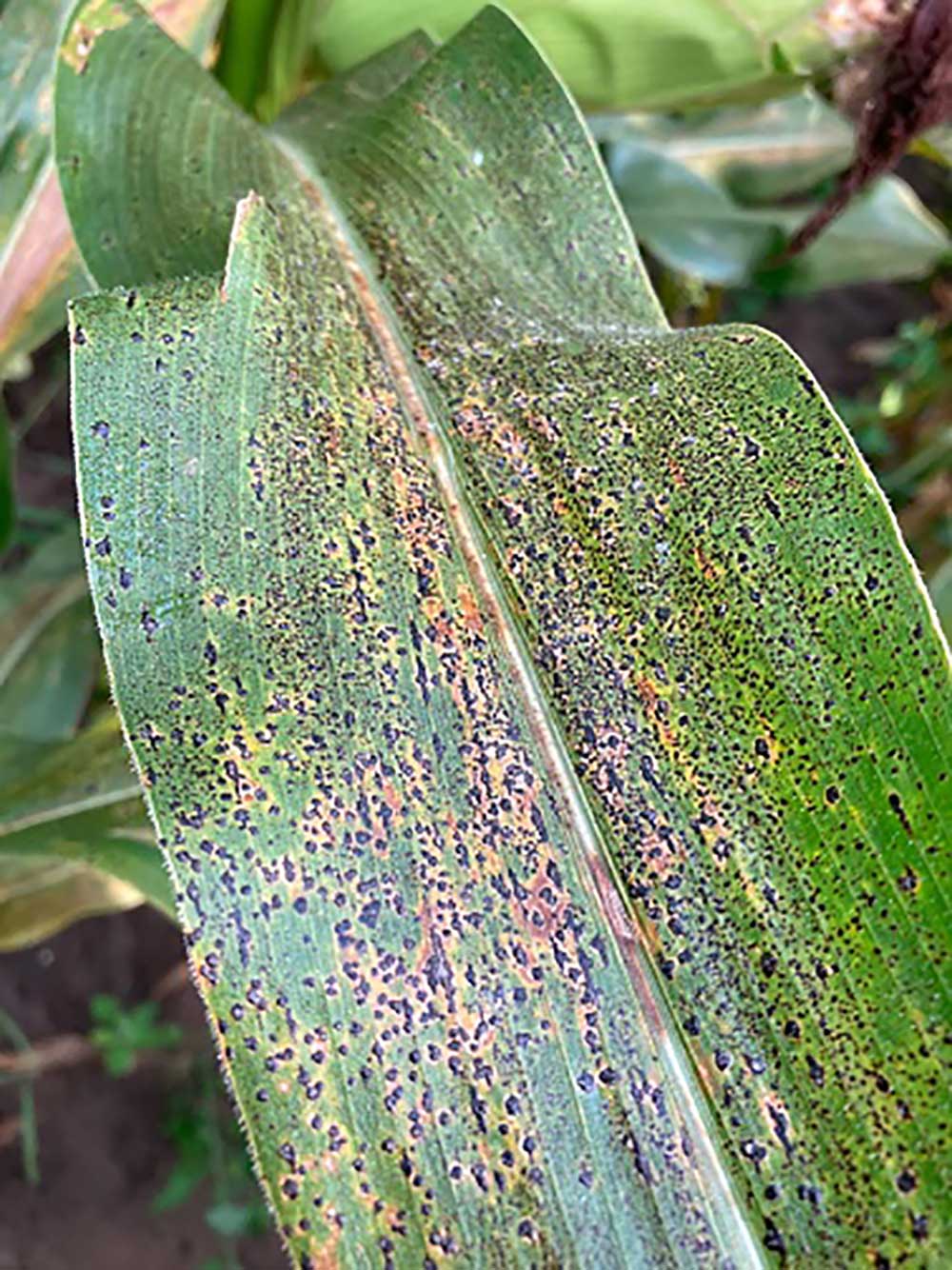University of Minnesota researchers developed and reported processes for the first time to infect corn plants in the field with the corn tar spot pathogen, a relatively new — yet pervasive — disease threatening corn production across the United States.
The new and novel process makes it possible for scientists to conduct research in the field — a critical step in better understanding the disease that first emerged in Minnesota in 2019.
Recently published in Plant Disease, the research was funded by the University’s Minnesota Invasive Terrestrial Plants and Pests Center, supported by the Minnesota Environment and Natural Resources Trust Fund as recommended by the Legislative-Citizen Commission on Minnesota Resources.
“Tar spot is a challenging pathosystem, and corn tar spot season has begun this year with the first reports coming from Kansas, Iowa, and Missouri,” said lead author José E. Solórzano, a graduate student at the University of Minnesota. “We have figured out how to induce the disease in controlled and field environments, which enhances our research and understanding of the disease, and we expect it will help other researchers as well.”
The study describes how to collect, store, prepare, and apply inoculum to corn foliage to induce infection in the field. It also provides novel insights into tar spot incubation, latent, and infectious periods.
The researchers found:
- A single inoculation event can initiate tar spot and subsequent spread of the disease
- Inoculum stored at -20 degrees Celsius for ten months can remain viable and lead to infection
- Tar spot can develop and spread in drier and less humid environmental conditions that were not previously considered conducive for this disease
“Corn tar spot is a new and emerging disease that is poorly understood. This work advances the capacity to conduct research leading to improved understanding and management of this disease,” said co-author Dean Malvick, a professor in the College of Food, Agricultural and Natural Resource Sciences.
The researchers will continue to study the biology of the tar spot-causing pathogen and the pathogen’s host range to develop improved management strategies.
»Related: Plan fungicide strategy now to protect corn yields against tar spot


